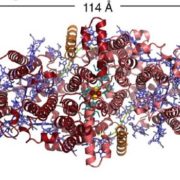
Structure of a symmetric photosynthetic reaction center–photosystem ($)
Blog, Plant Science Research Weekly, Research, Research Blog0 Comments
/
Plants, green algae and cyanobacteria carry out oxygenic photosynthesis through the coordination of two photosystems, PSI and PSII. Many other photosynthetic prokaryotes use a single reaction center to carry out anoxygenic photosynthesis. Gisriel et al. describe the structure of a photosynthetic reaction…
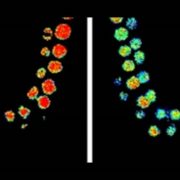
In vivo FRET–FLIM reveals cell-type-specific protein interactions in Arabidopsis roots ($)
Blog, Plant Science Research Weekly, Research, Research BlogLong et al. examined transcription factor complex formation in vivo in Arabidopsis roots using a technique that combines FRET (Förster Resonance Energy Transfer) and FLIM (Fluorescence Lifetime imaging Microscopy). Using this method, the authors were able to observe cell-type specific complex formation…
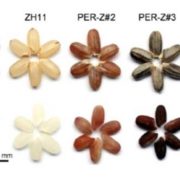
Metabolic engineering of anthocyanin and betalain pigments for health and aesthetics: Purple rice, blue chrysanthemums and violet tomatoes
Blog, Plant Science Research Weekly, Research, Research BlogPigment engineering was featured in three recent papers. Anthocyanins are blue pigments valued for their antioxidant health benefits and for their beauty, but their biosynthesis and chemistry is complex. Noda et al. introduced two genes to produce blue anthocyanins in chrysanthemum petals (Sci Advances…

Rhamnose-containing cell wall polymers suppress helical plant growth independently of microtubule orientation
Blog, Plant Science Research Weekly, Research, Research BlogSaffer et al. identified an Arabidpsis mutant with swirled petals and with petal epidermal cells that show a left-handed (but never right-handed) twist. They mapped the mutation to the RHAMNOSE BIOSYNTHESIS1 (RHM1) gene, which is most highly expressed in petal epidermal cells and encodes an enzyme that…
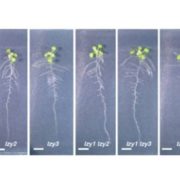
LAZY1 family contributes to gravity signaling within statocytes and branch angle control of roots and shoots
Blog, Plant Science Research Weekly, Research, Research BlogIt’s easy to demonstrate that plants sense gravity, and we also know that statocytes are involved in the perception of gravity. Statocytes are gravity-sensing cells that contain dense starch-containing amyloplasts that move within the cell in the direction of gravity. Differential growth to accommodate…
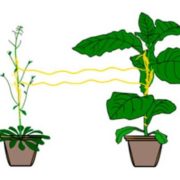
Stem parasitic plant Cuscuta australis (dodder) transfers herbivory-induced signals among plants
Blog, Plant Science Research Weekly, Research, Research BlogParasitic plants such as Cuscuta astralis (dodder) form connections with their host plants through which nutrients and other molecules pass. Using mutant plants and transcriptomic assays, Hettenhausen and Li et al. showed that two or more plants connected by Cuscuta bridges shared information through…
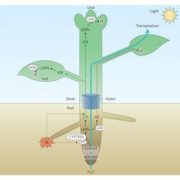
Systemic transport of trans-zeatin and its precursor have differing roles in Arabidopsis sho
Blog, Plant Science Research Weekly, Research, Research BlogPlant hormones are made in one tissue and usually transported to act in another. One example of this is the transport of cytokinin. In the root, the precursor trans-zeatin riboside (tZR) is synthesized, then xylem loaded and transported to the shoot. Once at a site of action like the leaf or shoot…
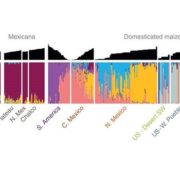
Genomic estimation of complex traits reveals ancient maize adaptation to temperate North America
Blog, Plant Science Research Weekly, Research, Research BlogMaize (corn), an important staple of the diet in ancient and modern times, was cultivated at higher altitudes in the southwestern United States, around 2,000 years after its introduction to the lowland US regions. In order to better understand how maize later adapted to high altitudes, authors sequenced…
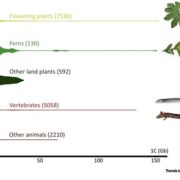
Opinion: Is there an upper limit to genome size? ($)
Blog, Plant Science Research Weekly, Research, Research BlogThere are only ten organisms known to have genomes larger than 100 Gb in size and six of those are plants. Both Numbers 1 and 2 on the list are plants with genomes that are nearly 50x the size of the human genome (which is 3 Gb), and over 1000x that of Arabidopsis: the 148.8 Gb-genome Paris japonica…

